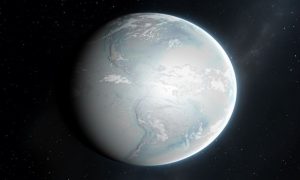For decades now, scientists have argued about how the universe is shaped, in the sense of complex parameters that govern the rules of space and time. Is it a simple open expanse, like a bigger version of the spaces we’re used to? Does it wrap around on itself like a donut? Or something even stranger?
Read More:- Scientists are getting closer to proving the multiverse exists
Now, new research published in the journal Physical Review Letters, in the inaugural paper from a new consortium of cosmologists known as the COMPACT Collaboration, found that the “topology” of the universe — the shape of its geometry, basically — is likely anything but simple.
The researchers looked at the universe’s cosmic microwave background, which is basically the inherent “glow” of space, dating back to ancient radiation at the dawn of time.
Read More:- Are we ready to face an asteroid that could hit Earth in 14 years? NASA sees work to do.
While they didn’t nail down any one definite topology for the universe, they did find that data on the universe’s background radiation doesn’t rule out some seriously exotic shapes — and in fact, we might just live in something akin to an infinite hall of mirrors.
Twist and Shout
Take the main focus of the paper, a shape known as a “3-torus.” As the American Physical Society explained in a summary of the paper, that would be like if there was a cube on which each set of opposing sides were connected — meaning that no matter how large the universe appears, if you peer deep enough into its depths, you’ll see the back of your head.
Read More:- Be Careful: These Android Apps Are Installing Malware, Stealing Your Data
The APA described the effect as a “hall of mirrors,” adding that “lines of site within a 3-torus form closed loops that return to the viewer, so everything appears to repeat infinitely.”
Obviously, this is all just dealing with what’s possible, not what actually is — which is why COMPACT is looking to see if they can find a “detectable topological fingerprint” in the cosmic background radiation that might give a more definite answer.
Also Read– Hole spotted on Mars could be a gateway to ancient alien life
In an interview with the APS, Columbia cosmologist Oliver Philcox, who wasn’t involved in the new paper, seemed to agree that any informed guess is worth considering.
“There’s a lot of possible ways the universe could be topologically connected,” Philcox said, “and it’s hard to rule them out.”

























